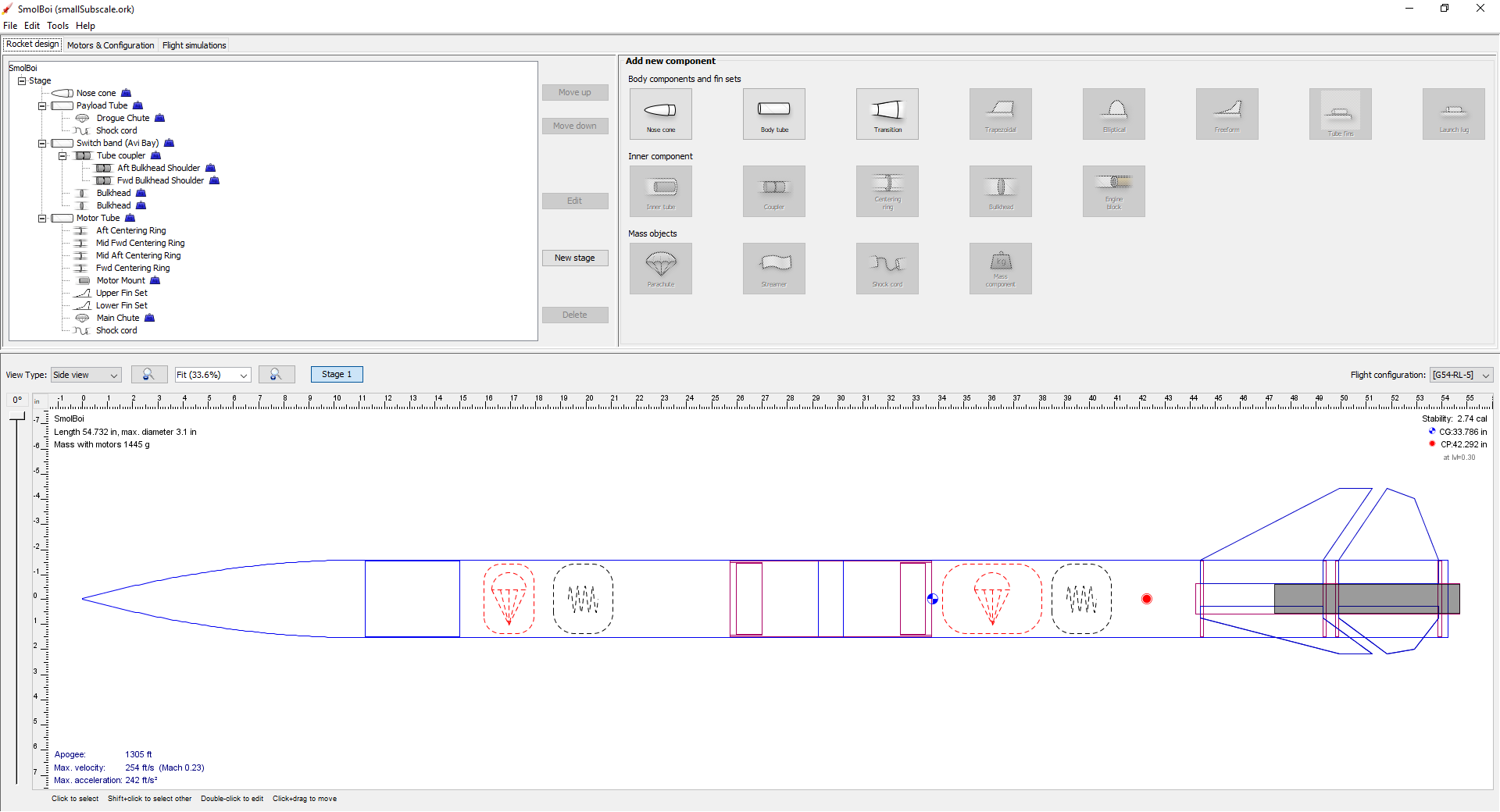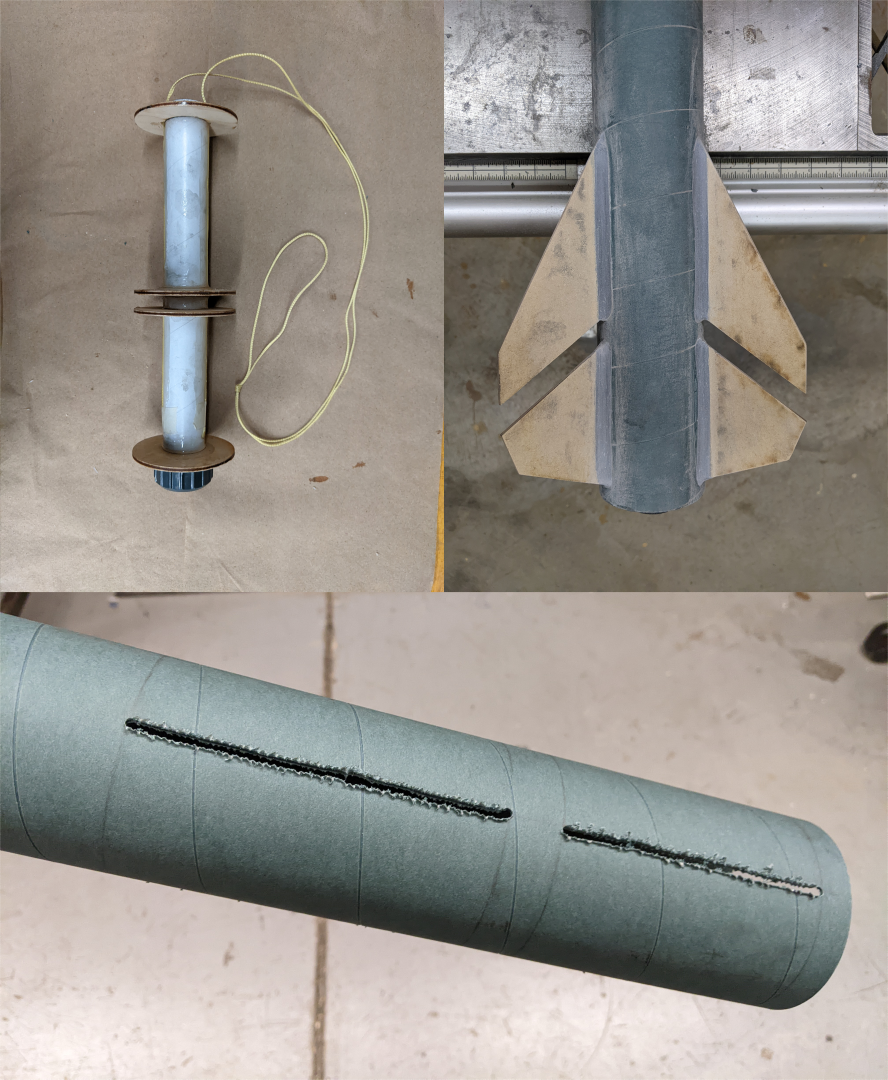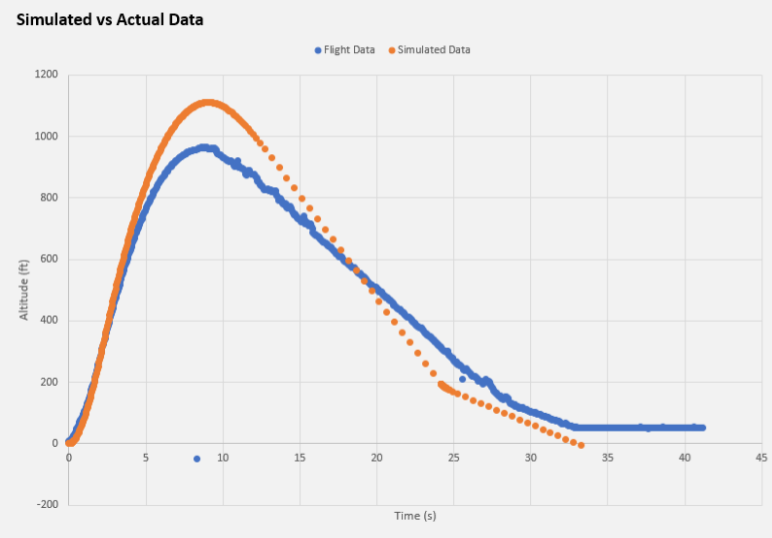Midpower Rocket
2021
Overview
Permalink to “Overview”For the 2021-2022 NASA USLI competition year I was the chief engineer. As the team approached the CDR deadline, several scrubbed launches meant there were no more club launches to launch our highpower subscale required for the competition. As a hail mary attempt, I assembled a smaller midpower subscale that still tried to maintain as many similarities to the fullscale launch vehicle as possible. The vehicle was successfully launched to keep the team in the competition.
See the relevant section I wrote for our CDR report here.
Simulation
Permalink to “Simulation”I designed the launch vehicle in Open Rocket. The goal was to match the fullscale vehicle as closely as possible, maintaining not just it’s flight characteristics, but also as many manufacturing techniques as possible. Some compromises on proportions had to be made as the subscale vehicle had a different center of mass since it was made from bluetube and not fiberglass. Open Rocket then allowed me to run simulations to predict altitude, rail exit velocity, drift, and static stability margin for various motor configurations, allowing me to choose the most appropriate motor.

Manufacturing
Permalink to “Manufacturing”The vehicle was almost completely build from scratch. I matched the centering ring and fin configuration as closely as possible to the fullscale, only making them proportionally slightly smaller to maintain an appropriate center of pressure. I cut the motor mount tube to length and added slots in the centering rings allow the recovery harness to sit flush with the tube to which it is epoxied. I added epoxy fillets to the fins and sanded them smooth in preparation for painting.

Flight Results
Permalink to “Flight Results”The flight went nominally, with the only failure being the nosecone slightly breaking. The data from the flight altimeter deviated from the simulation. I am sure that the slower than expected decent under the drogue chute is because the parachute protector was oversized and contributed significantly to the drag. The two anomalous points are due to poor sealing between the pressurized sections of the deployment charges and the avionics bay. I am fairly certain that the lower than expected altitude is combination of a higher than expected launch weight along with a slightly underperforming motor.
